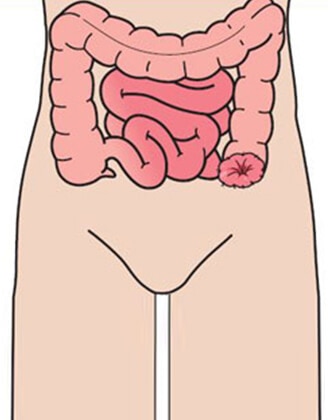In a colostomy operation, part of your colon (large intestine) is brought to the surface of your abdomen to form the ostomy. A colostomy is usually created on the left-hand side of your abdomen and it can be either temporary or permanent depending on the reason for surgery or the severity of the illness.
Stools in this part of the intestine are solid and, because an ostomy has no muscle to control defecation, faeces will need to be collected using an ostomy pouch.

What is end colostomy?
The most common kind of colostomy is an end colostomy, where the end of the large intestine (colon) is brought out through a small cut in the abdominal wall, and then stitched to the skin of the stomach creating an opening (ostomy).
An end colostomy can be either permanent or temporary
The temporary solution is relevant in situations where the diseased part of the intestine has either been removed or needs to rest before the ends are joined together.
The permanent solution is chosen in situations where it is too risky or not possible to re-join the two parts of the intestine.

What is loop colostomy?
In a loop colostomy a loop of the bowel is brought out above skin level. A cut half through is then made on the exposed bowel loop forming two openings, which are then rolled down and sewn onto the skin.
The loop colostomy is typically a temporary measure performed in acute situations. It can also be carried out to protect a surgical join in the bowel.



